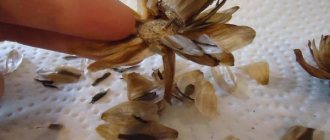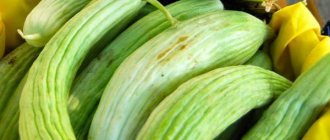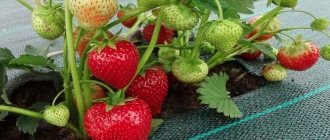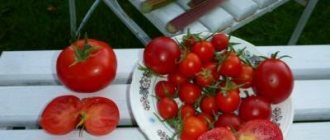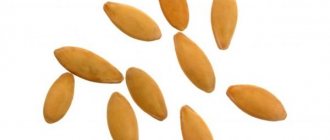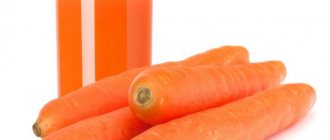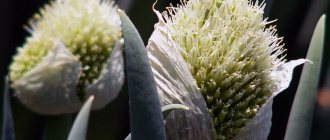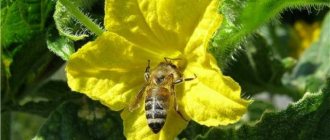Many gardeners prefer to harvest carrot seeds themselves rather than buy material in stores. The reasons are different: the desire to get an environmentally friendly harvest, to grow a certain variety, or distrust of producers. Purchased seed does not always guarantee the desired result. Therefore, many summer residents prefer to collect seeds themselves.
Obtaining seeds for sowing at home is a simple process, but requires some preparation. We will tell you how to do this correctly in the article.
How to grow carrots for seeds at home
Carrots are a biennial plant. In the first year, root vegetables are suitable for preparing various dishes and preserving them, and you can obtain seeds for further cultivation only in the second year.
Choice
For these purposes, varietal rather than hybrid carrots are used. The crop should not be resistant to premature flowering.
Choose large root vegetables. Pay attention to the color characteristic of the variety and the correct shape. Root vegetables must be clean, without mechanical damage.
Carrots are kept in boxes with sand, inspected regularly throughout the storage period.
Planting a garden
At home, gardening is grown in containers. 1-2 days before planting, root crops are disinfected in a weak solution of potassium permanganate. They are planted in containers and placed close to each other, since the plant definitely needs to be pollinated. Root crops are planted in the soil to their full length, leaving a tail of greenery on the surface. Carrots are taken strictly of one variety.
Important! The soil in the container should contain sand.
Carrots are usually planted in open ground at the end of April. But it's better to wait until the frosts end. Cold soil is not suitable for seed carrots.
Holes are prepared in the garden bed, the depth of which should correspond to the size of the root crops. Root crops are planted vertically, so that the head is not above the soil level. The distance between carrots in a row should be at least 40 cm, and the distance between rows should be at least 70 cm. It is better that the planting site is sunny.
Attention! Umbrella crops and wild carrots should not be planted next to seed carrots.
Care
At the time of planting, it is recommended to add a little ash or compost into the hole, then the soil will be filled with nutrients. While the tops are growing, the carrots are fed with fertilizers containing nitrogen.
During carrot budding, potassium fertilizers are suitable.
While the seed carrots are growing, the soil is regularly mulched, weeded and watered without over-wetting or drying out the soil.
Important! The main pest of root crops is the carrot fly. They escape from it by adding a soap solution to the soil, which kills the larvae.
When to plant carrots
To obtain high-quality material suitable for further sowing, it is necessary to follow certain rules and requirements. And you should start by planting carrots by seeds:
- When carrots are planted the first year for harvest and further consumption, little attention is paid to climatic conditions. This is especially true for temperature conditions. This is due to the fact that young fruits are highly resistant to low temperatures. In this case, planting should be done when the temperature is stable and there is no frost.
- An important factor is the phase of the moon. It is better to plant carrots during the period when the night star begins to grow.
- When the time and fruits have been chosen, you can begin planting them. But first of all, it is worth preparing the ground. To do this, the bed is loosened and fertilized. A hole of the required depth is made in the selected area. The root crop should penetrate the soil easily.
- The next step is to water the hole. To do this, it is recommended to use warm water. After the liquid is absorbed, carrots are placed in the hole. Next, the fruit is carefully covered with earth and compacted. It is worth considering that the top of the root crop should be at soil level.
- Next, the carrots are watered again with warm water, and the ground around is mulched.
Thus, carrots are planted for further seed collection. It is worth considering some features. So, the fruit can germinate in the cellar. This will not affect its maturation in any way. So no need to worry about these carrots.
See also
When to remove carrots from the garden for storageRead
When to collect carrot seeds
Carrot seeds are harvested at the optimal stage of maturity. In unripe ones, as in overripe ones, the ability to germinate is reduced. Overripe ones may fall off, and then there will be no way to collect them.
Collection time
Harvesting time depends on weather, climatic conditions and carrot variety. The material is mainly collected in July - early August. To determine the period, the condition of the plant is regularly checked.
Signs that seeds are ready to harvest
The first sign of ripening is a change in the color of the inflorescences. They begin to darken, acquire a dark beige, sometimes brown color.
When the inflorescence is completely dry, it is ready for harvesting.
Isolate your plants
Seed saving is about preserving genes from specific varieties you like so you can provide more predictable results. In the interest of producing plants with the expected characteristics, you will need to isolate your chosen plants from other varieties.
These plants are pollinated by insects that stop on the flowers, feeding on the nectar and moving the pollen around. If there are other varieties of carrots growing within a certain radius, pollen from them may be transferred to the plants you are interested in, causing unexpected and possibly undesirable results.
The easiest way for you to isolate your carrots is to have enough distance. However, the radius required to successfully isolate plants will vary depending on obstructions such as buildings and other vegetation on your property, as well as your local climate and how wet or windy you are.
Dogs help biologists search for endangered plant species and animal tracks
Artyom Antonov looks more and more like his father with age: photo of Yakubovich’s son
WHO is considering introducing vaccination passports for tourists
How to assemble correctly
At first glance, there are a lot of seeds in the inflorescences. But not all of them are suitable for planting.
Large inflorescences are selected, small branches are removed, and the stem and main shoots are left. If the summer is wet, the inflorescences are cut off and stored in a dry room to ripen. The room must have good ventilation.
You can check the final readiness of the umbrellas by rubbing them with your hands - the seeds will easily fall off.
It is better to shake off the seeds into prepared containers. These can be plastic cups or small containers. A fabric bag will also work.
How to select unsuitable seeds
The highest quality seeds for planting are located at the edges of the inflorescences. It is recommended to pour them into a separate container.
Carrot seeds are strewn with small fibers, so various debris sticks to them. When poured into a container, it will end up on the surface. It is collected and thrown away.
To check the suitability of the seeds, they are soaked for 2 hours in water at room temperature. Low-quality ones float to the surface, and high-quality ones settle to the bottom. The quality seeds are then filtered and dried.
Treatment of carrot seeds before planting in open ground in spring
Carrots are planted by seeds in the spring; the exact timing depends on the plant variety. In the twentieth of April, you can start sowing early-ripening varieties; from April 25 to approximately May 5, mid-ripening varieties begin to be sown, and carrots intended for winter storage are planted on June 10-15.
Carrots are planted with seeds directly into open ground.
To prepare carrot seeds for planting in the spring you need:
- soak for two hours in clean water at room temperature;
- scatter the seeds on a damp cloth and cover with another damp cloth on top;
- keep the seeds in the room, stirring them gently from time to time;
- soak the fabric when dry;
- When the seeds are completely swollen and begin to hatch, move them to the refrigerator for 10 days for hardening.
Sprinkle the bed reserved for carrots with ash, cut each groove in it up to 2.5 cm deep, leaving row spacing of 20 cm, and 12 cm along the edges of the bed. Sprinkle the grooves with water and sow the prepared seeds. It is enough to maintain a distance of 1.5 cm between seeds. Level the furrows with earth. It is recommended to stretch the film on top of the bed at a height of 15 cm so that seedlings appear faster, and when greenery appears, the film can be removed.
Carrot seeds are very small in size, which makes planting difficult. Gardeners, in an effort to simplify the process of sowing seeds, come up with different methods for planting carrots.
Before sowing, you can mix the seed material with sand so that the seeds do not stick together.
You can first stick one seed at a time onto thin paper strips (you can use toilet paper). Pick up a carrot seed with a toothpick, dip it in paper glue or paste and apply it every 5 cm on the paper. Such paper strips are laid in furrows and sprinkled with soil on top.
To treat carrot seeds before planting in the spring, you can prepare a thick solution using starch. It is mixed with planting material and poured through a watering can into the prepared cells. When preparing the cells, take into account the distance between the seeds and the rows. Planting carrots in egg boxes is an original and effective method
Planting carrots in the spring is the right time to perform this activity.
- Author: admin
Rate this article:
- 5
- 4
- 3
- 2
- 1
(1 vote, average: 5 out of 5)
Share with your friends!
Where and how to store carrot seeds
For 2-3 years, carrot seed does not lose its germination power if it is stored correctly.
Dried seeds are stored in linen bags or small cardboard boxes in a cool, dark place. Plastic containers and plastic bags are not suitable for storage, as they do not allow air to pass through. It is important that no moisture gets into the container. Direct sunlight should be avoided.
During the storage period, the condition of the material is periodically checked; if spoiled seeds appear, they are thrown away.
At high humidity, the seeds are dried again at room temperature.
Advice from experienced summer residents
Advice from gardeners will help beginners achieve the desired result:
- Before planting, clean carrot seeds from essential oils and tannins - they interfere with germination. To clean, dry seeds in gauze bags are spilled with hot water (not higher than 50°C), and then kept in cold water for 10-15 minutes.
- Give preference to organic fertilizers - manure, humus, chicken droppings. If you use manure as fertilizer, add it to carrot beds 1-2 years before sowing. Freshly applied manure spoils the taste and shape of root crops.
Summer residents with experience in seed production recommend choosing varieties that produce good seed material:
- early varieties - Tushon, Gollandka, Amsterdam, Barynya;
- medium varieties - Nantes, Karotel, Chantane Royal;
- late varieties - Red Giant, Vita Longa, Bayadera.
Start with open pollination
Since these root vegetables are biennial, saving their seeds is a two-year process. And in order to successfully grow carrots that match the chosen type, you need to get started in the first year.
To start, choose a variety that is open pollinated and not a hybrid. Hybrid varieties are the result of cross-pollination between two different mother plants. When breeders create a hybrid vegetable, each parent plant is selected for different desirable properties, such as sweet taste from one and large size from another.
The first generation produced from the hybrid will have these selected properties. But if you make seeds from such carrots, there is no guarantee that they will have the characteristics of the parent plant.
The girl made home renovations using lessons from the Internet and showed what happened
Fur vests and other anti-trends this winter: how to replace them (photo)
Quick, simple and non-toxic: the girl told how to clean the oven from grease
Thus, seeds from hybrids can produce plants with desirable traits. However, such a seed may also not be viable at all.
So choose an open-pollinated variety to start with to ensure you know exactly what to expect when you plant your seeds.

